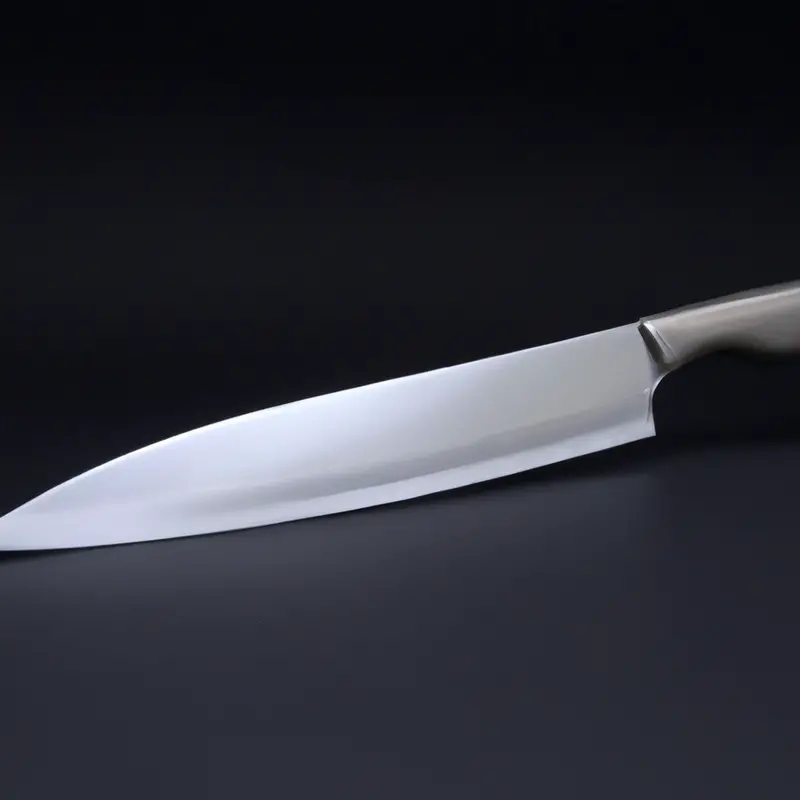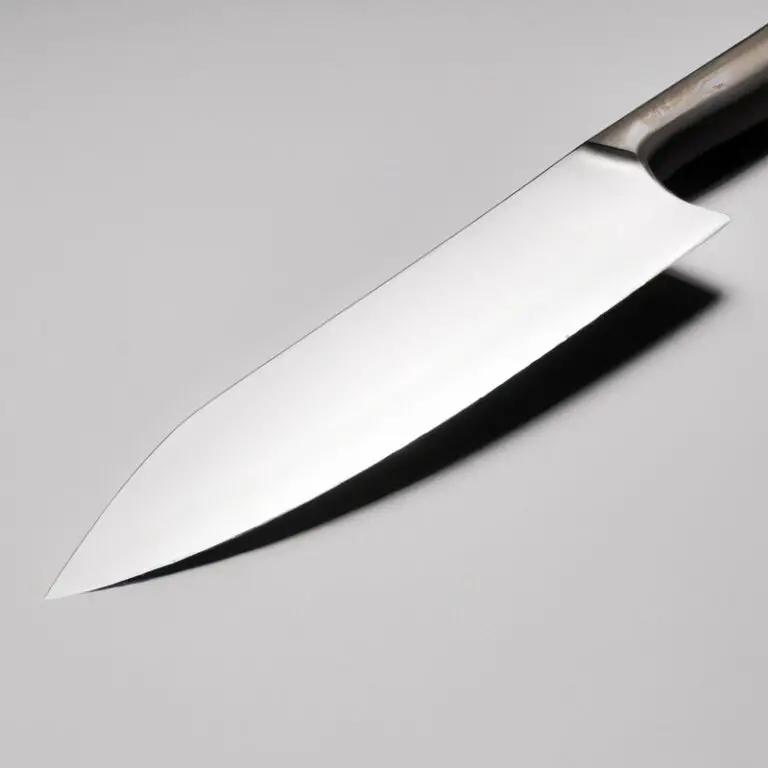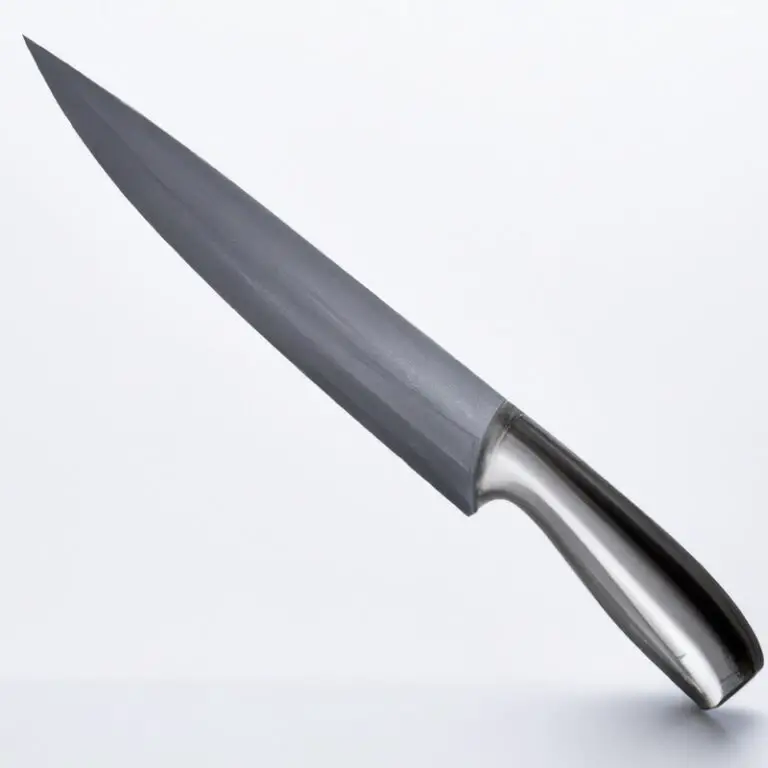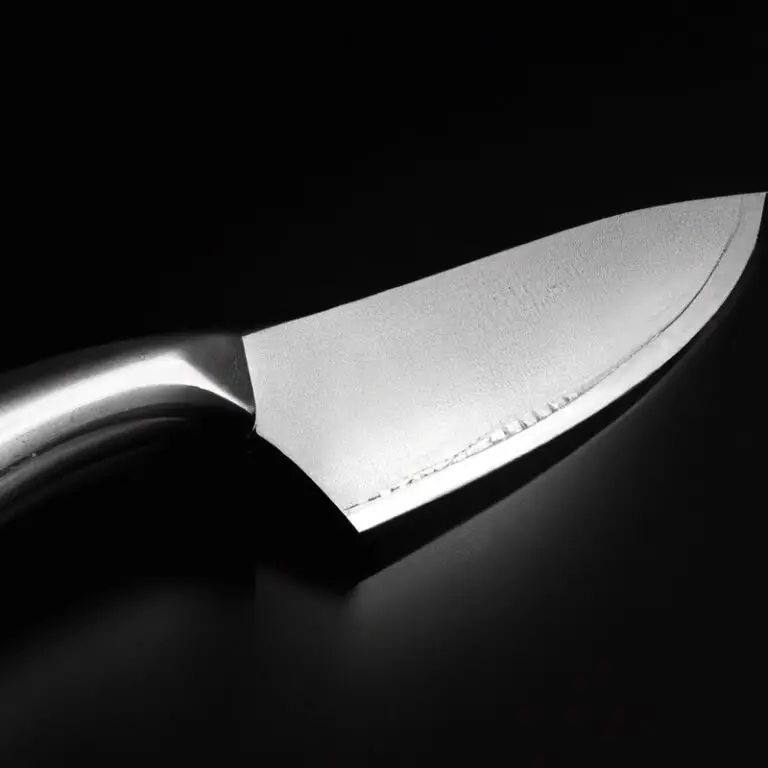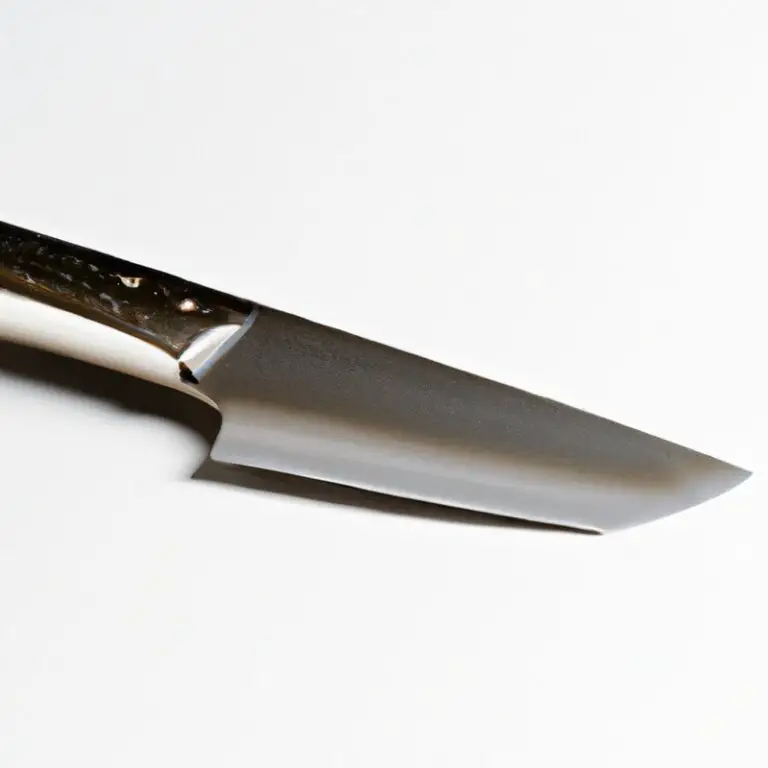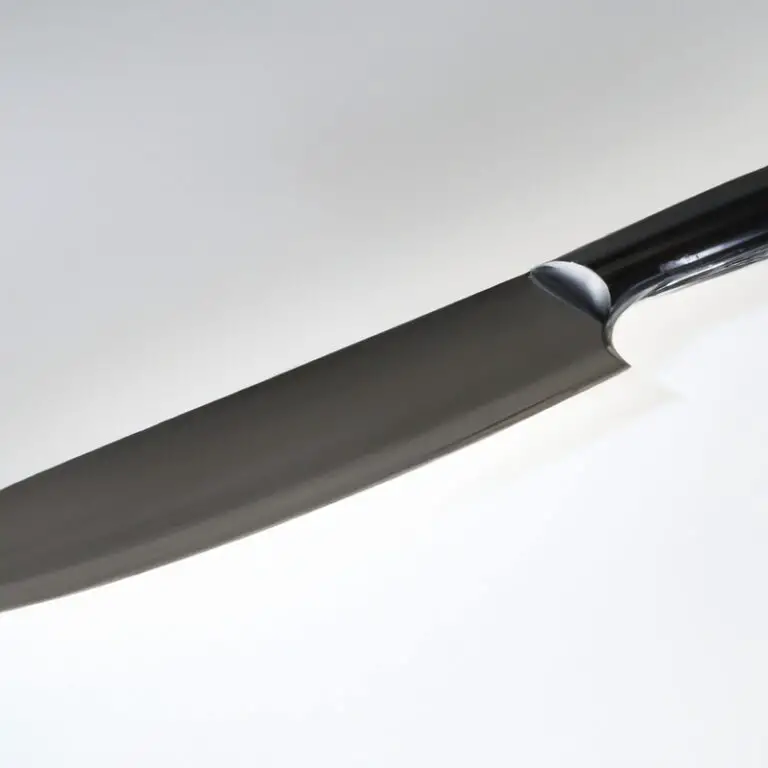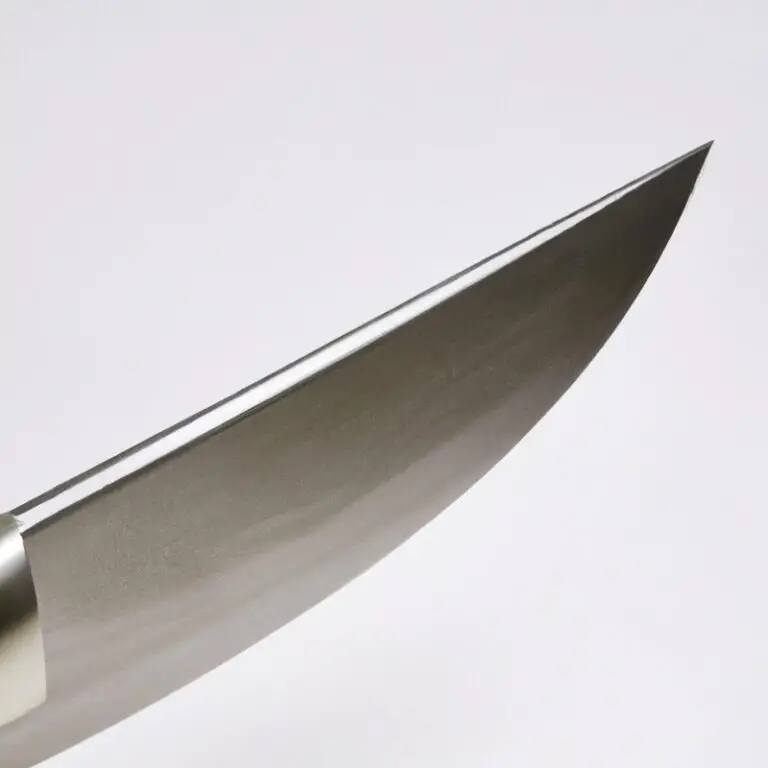Can You Use a Santoku Knife For Making Garnishes? Impressively!
Key Takeaways:
- Although not specifically designed for garnishing, a Santoku knife can still be used effectively for this purpose.
- Its unique blade design allows for precision cuts and versatility in the kitchen.
- However, it’s important to ensure the blade is sharp and the technique is proper to avoid damaging the garnish or injuring oneself.
- Ultimately, the type of knife used for garnishing is a matter of personal preference, but a Santoku knife can certainly be a viable option.
Do you love to cook and present your dishes with style? If so, you know that garnishes are crucial to make your meals look professional and appetizing.
But, have you ever wondered what kind of knife would work best for making garnishes?
Allow me to share my expertise on the topic and answer a common question: Can you use a Santoku knife for making garnishes? In this article, I’ll explain what Santoku knives are, how they differ from other knives, and provide techniques, tips, and comparisons on using a Santoku knife for garnishes.
Let’s get started!
| Question | Answer |
|---|---|
| What is a Santoku knife? | A Japanese knife that is known for its sharpness and versatility in chopping, slicing, and dicing. It typically has a shorter blade than a traditional chef’s knife and uses a sheepsfoot blade shape. |
| What are garnishes? | Decorative elements used to enhance the appearance of a dish. These can include herbs, vegetables, fruits, and other food items. |
| Can a Santoku knife be used for making garnishes? | Yes, a Santoku knife can be used for making garnishes but may not be the best option. The shorter blade length may make it difficult to create intricate designs and the sheepsfoot blade shape may not allow for precise cuts. |
| What are some other knives that can be used for making garnishes? | A paring knife or a utility knife may be better options for making precise cuts and intricate designs. |
| What factors should be considered when choosing a knife for making garnishes? | Blade length, blade shape, and the ability to control the knife are all important factors to consider when choosing a knife for making garnishes. Comfort is also important as working with a knife for an extended period of time can be strenuous on the hands and wrists. |
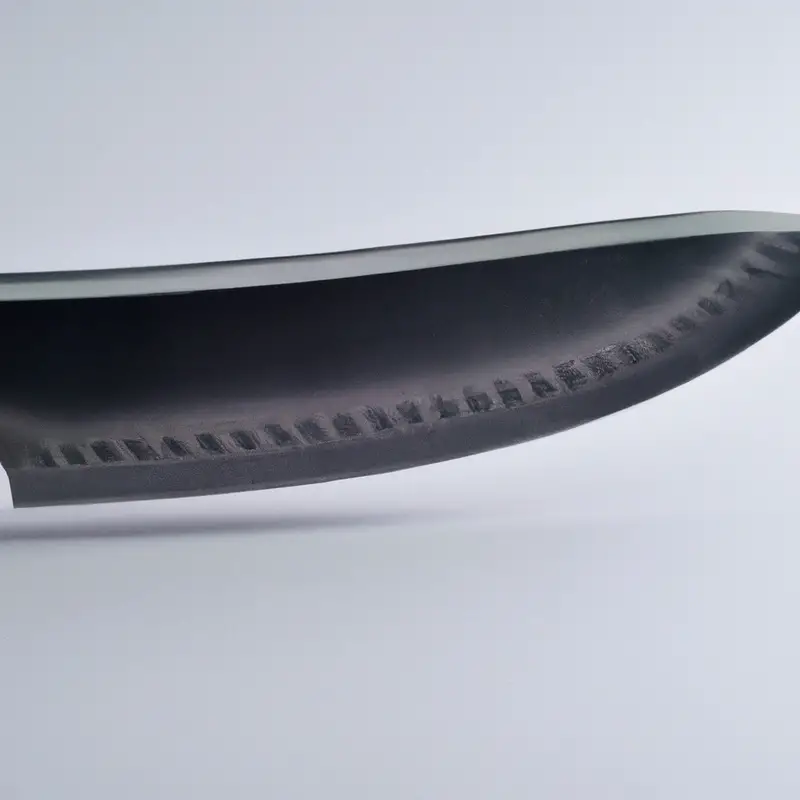
What is a Santoku Knife and How is it Different from Other Knives?
A Santoku knife is a versatile Japanese knife that is popular for its ability to slice, dice, and mince with ease. Compared to other knives, it has a shorter and wider blade, typically measuring between 5 and 7 inches in length.
This design allows for better control and precision when cutting through vegetables, fruits, and even meats.
Santoku knives are also known for their unique blade shape, which features a flat edge and a curved tip. This makes them ideal for rocking back and forth while cutting, allowing for a smoother motion and reducing the risk of accidentally slicing into your finger.
Another key feature of the Santoku knife is its construction.
Traditional Japanese Santoku knives are made with high-carbon steel, which is known for its ability to hold a sharp edge. However, modern versions can also be made with stainless steel, which is easier to maintain but may not be as sharp.
In summary, Santoku knives differ from other knives in their shorter and wider blade, unique shape, and construction.
They are versatile tools that can be used for a variety of kitchen tasks, including making garnishes.
What are Garnishes and Why are They Important for Food Presentation?
Garnishes are decorative edible elements used to enhance the visual appeal of a dish. They can include sliced or chopped fruits and vegetables, herbs, flowers, sauces, and other decorative elements.
Garnishes are important for food presentation because they add color, texture, and dimension to a dish, which can make it more visually appealing and appetizing.
Additionally, garnishes can be used to indicate the flavor profile or ingredients of a dish, which can be helpful for diners with dietary restrictions or preferences. Overall, garnishes are an important component of food presentation and can elevate even the simplest dishes to a more aesthetically pleasing and memorable experience.
Can You Use a Santoku Knife for Garnishes?
Yes, you can definitely use a Santoku knife for making garnishes. The shape and size of Santoku knives are well-suited for creating intricate cuts and designs on fruits and vegetables.
Its thin and sharp blade can easily glide through produce, making it ideal for creating thin slices and delicate shapes.
Additionally, Santoku knives offer improved precision and control, allowing you to make more accurate cuts for your garnishes. With proper technique and a sharp blade, a Santoku knife can be a great tool for creating eye-catching and professional-looking garnishes.
Understanding the Blade of a Santoku Knife: Shape, Size, and Material
The Santoku knife is a Japanese-style knife that has gained popularity worldwide for its unique shape, size, and material. The shape of the blade is flat, and it has a slight curve towards the tip, giving it a sharp and precise edge that can cut through foods efficiently.
The length of the blade ranges from 5 to 7 inches, making it suitable for a variety of tasks, including making garnishes.
The blade material is typically high-carbon stainless steel, which means it is resistant to corrosion, rust, and staining. This material also ensures that the blade stays sharp for longer periods, reducing the need for frequent sharpening.
The Santoku knife’s shape, size, and material make it ideal for making garnishes.
Its flat blade allows for thin, even slices, and its sharp edge can cut through delicate foods without causing damage. The length of the blade also provides enough space to create intricate designs.
In summary, the Santoku knife’s shape, size, and material make it an ideal tool for making garnishes.
Its unique design and sharp edge allow for precision and accuracy while cutting delicate foods. The high-carbon stainless steel material ensures durability and longevity.
The Advantages of Using a Santoku Knife for Garnishes
The Santoku knife has several advantages when it comes to making garnishes. Firstly, its wide and flat blade allows for more control and precision when cutting intricate shapes.
Additionally, the curved tip helps to create smooth and fluid cuts, allowing for greater artistic freedom.
Another advantage of the Santoku knife is that it is typically lighter and more maneuverable than other knives, making it easier to handle and control when making detailed cuts. Its comfortable handle also provides a secure grip, reducing the risk of hand fatigue or injury.
The blade’s sharpness and durability are also significant advantages for creating intricate cuts and designs while maintaining a consistent shape.
The blade is made of high-quality, sturdy materials like carbon steel or ceramic, which ensures a long-lasting edge, making it ideal for garnish-making. Furthermore, the Santoku knife is versatile and can be used for a variety of tasks beyond garnishes, including chopping vegetables and slicing meat.
Its use in the kitchen is not limited to garnish-making alone, making it a valuable addition to any home or professional kitchen.
Overall, the Santoku knife is an excellent choice for creating delicate garnishes due to the blade’s shape, size, and material, providing control, precision, and durability essential for creating detailed and intricate designs.
Techniques for Making Garnishes with a Santoku Knife
Techniques for Making Garnishes with a Santoku Knife:
- Julienne: For thin and uniform strips of vegetables or fruits, use the Santoku knife to slice them into matchsticks. This technique works best for carrots, cucumbers, and zucchinis.
- Chiffonade: This technique works best for leafy greens like spinach, basil, and lettuce. Roll the leaves tightly and use the Santoku knife to make thin ribbons.
- Stacking: Cut thin slices of fruits or vegetables and stack them together. Then, use the Santoku knife to cut them into shapes like circles, triangles, and diamonds.
- Carving: Use the Santoku knife to carve intricate designs on fruits and vegetables. This technique works best for soft produce like watermelon, cucumber, and tomato.
- Sculpting: For more advanced garnishes, use the Santoku knife to sculpt elaborate designs like flowers, animals, and people. Try this technique on radishes, potatoes, and carrots.
Remember to hold the Santoku knife with a firm grip and make slow, precise cuts for the best results. With these simple techniques, your dishes will have a beautiful and professional finish.
Tips for Choosing the Right Santoku Knife for Garnishes
When choosing a Santoku knife for garnish-making, there are a few key factors to consider:
- Blade size: A smaller blade, around 5-7 inches, is ideal for detailed cuts and intricate garnishes.
- Blade shape: Look for a Santoku knife with a curved blade, as this will allow for more precise cuts and greater control.
- Blade material: High-quality materials such as high-carbon stainless steel or Damascus steel will ensure a sharp and durable blade.
- Handle design: A comfortable and ergonomic handle is important for extended use and precise control.
- Brand reputation: Stick with well-known, reputable brands with a history of producing high-quality knives.
By considering these factors, you can find the best Santoku knife for your garnish-making needs.
Maintaining Your Santoku Knife for Optimal Garnish-Making
Maintaining your Santoku knife is crucial for optimal garnish-making. Here are some tips to keep your knife in top condition:
- Clean with mild soap and warm water immediately after use, then dry thoroughly.
- Avoid dishwasher use and do not soak your knife for extended periods.
- Sharpen the blade regularly to maintain its sharpness and ensure precision cuts.
- Use a protective cover when storing to prevent damage or dulling.
- Avoid cutting hard foods, such as bones or frozen items, as they can damage the blade.
By following these maintenance tips, you can ensure that your Santoku knife remains sharp and effective for garnish-making. Remember, a sharp knife not only makes it easier to create beautiful garnishes but also ensures safety while using it.
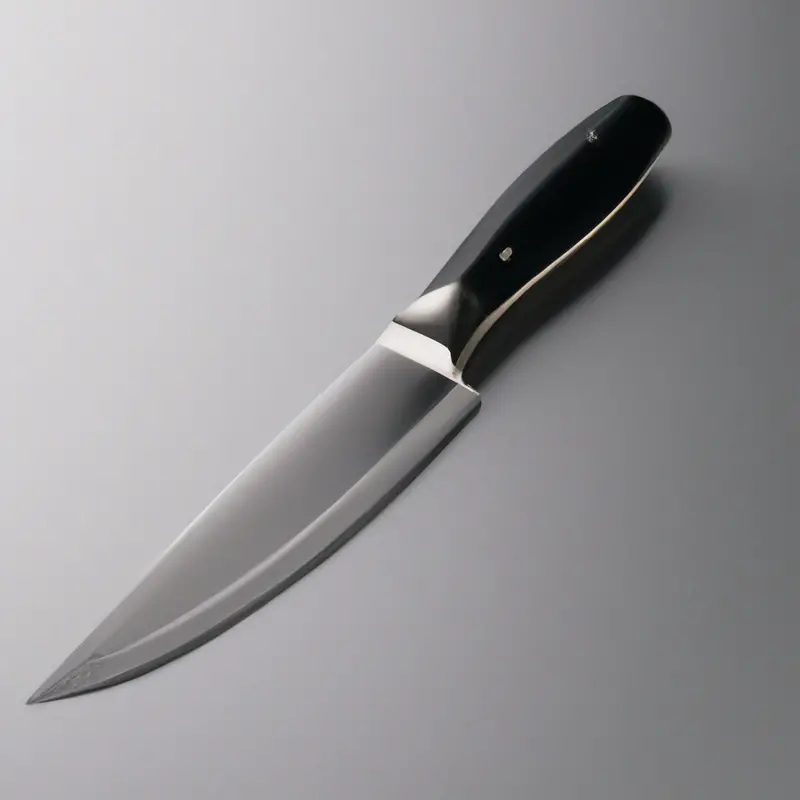
Comparing Santoku Knives with Other Knives for Garnish-Making
When it comes to comparing Santoku knives with other knives for garnish-making, there are three main types of knives to consider: the Chef’s knife, the Paring knife, and the Santoku knife. While the Chef’s knife and Paring knife are versatile, the Santoku knife is specifically designed for precision cutting.
The blade of a Santoku knife is thinner and shorter than a Chef’s knife, which makes it more agile for intricate cuts needed for garnishing.
Additionally, the Santoku knife has a hollow edge that prevents food from sticking to the blade, resulting in cleaner cuts. Compared to a Paring knife, the Santoku knife has a larger blade, offering more control and stability when cutting.
Overall, the Santoku knife is a great option for garnish-making because of its unique design that balances agility, precision, and versatility.
Which Fruits and Vegetables Are Best Suited for Garnishes with a Santoku Knife?
Santoku knives are versatile for making various garnishes, and some fruits and vegetables are easier to cut than others, providing cleaner slices. For instance, fruits and vegetables with a soft texture such as tomatoes, cucumbers, oranges, lemons, limes, strawberries, kiwis, and avocados are best suited for garnishes with a Santoku knife.
Additionally, harder fruits and vegetables like carrots, radishes, and apples require sharper and firmer knives to cut clean and even garnishes.
Final Verdict
Using a Santoku knife for making garnishes is a wise choice. This Japanese knife’s unique design can be an advantage when creating aesthetically pleasing and finely crafted garnishes.
Its sharpness, versatility, and ease of use make it an excellent tool for any professional or amateur chef looking to elevate their presentation game.
Remember to choose the right size, shape, and material for your Santoku knife and to maintain it correctly for optimal performance. By selecting the perfect fruit or vegetable, pairing it with a sharp Santoku knife, and unleashing your creativity, you can transform any dish into a work of art.
Don’t hesitate to try something new and experiment with creating beautifully-crafted garnishes using a Santoku knife.
With its many advantages, you won’t be disappointed.

